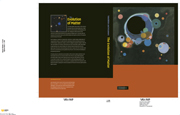Book contents
- Frontmatter
- Contents
- Introduction
- Part I The elements
- Part II Early solar system: nebula formation, evolution and lifetime
- 9 Introduction to the solar nebula
- 10 The primary solar system objects and related processes
- 11 Chondritic meteorites
- 12 Highly processed meteorites
- 13 A summary of early solar system chronology
- Part III Accretion of the Earth
- Part IV Global evolution of the Earth
- References
- Glossary
- Abbreviations
- Meteorites, rocks and minerals
- Index
12 - Highly processed meteorites
Published online by Cambridge University Press: 04 September 2009
- Frontmatter
- Contents
- Introduction
- Part I The elements
- Part II Early solar system: nebula formation, evolution and lifetime
- 9 Introduction to the solar nebula
- 10 The primary solar system objects and related processes
- 11 Chondritic meteorites
- 12 Highly processed meteorites
- 13 A summary of early solar system chronology
- Part III Accretion of the Earth
- Part IV Global evolution of the Earth
- References
- Glossary
- Abbreviations
- Meteorites, rocks and minerals
- Index
Summary
Introduction: non-chondritic meteorites and their relationships
The two main groups of meteorites other than chondrites are achondrites and iron meteorites (Wasson, 1985). Meteorites from the first group consist essentially of silicate minerals and are distinct from the chondrites both in their compositions and internal rock textures (the intergrowths of minerals), which indicate that they crystallized from a silicate melt or, at least, equilibrated extensively with such a melt. The second group comprises iron meteorites consisting chiefly of metal, frequently with sulphide and occasionally silicate inclusions. They tend to be coarse-grained (up to cm-size grains) and, by etching of a polished surface, the crystalline structure of the metal is made visible in the so-called Widmanstatten structures so often admired in museum collections.
There are ample arguments that both these meteorite types are products of the thermal processing of a chondritic precursor. These are, for example, the identical oxygen-isotopic compositions of some chondrites, achondrites and irons; the complementary chemical compositions of achondrites and iron meteorites: the mineralogy of silicate inclusions in stone-irons; the similar densities of processed asteroids and chondritic meteorites and of the unprocessed clasts of chondritic material often seen in non-chondritic meteorites (Zolensky et al., 1996; Meibom and Clark, 1999).
Oxygen isotopes appear to be a powerful tool for tracing the relations between primitive and processed meteorites. Enstatite chondrites, enstatite achondrites and aubrites have O-isotopic compositions close to the terrestrial fractionation line.
- Type
- Chapter
- Information
- The Evolution of MatterFrom the Big Bang to the Present Day, pp. 163 - 190Publisher: Cambridge University PressPrint publication year: 2008

